Ning Nan
Assistant Professor of MIS
Saunder School of Business, University of British Columbia
October 4, 2013
Speakman Hall 200, 10:00am – 11:30am
Seminar Title: Hypercompetition within Industry: Achieving and Renewing Temporary Competitive Advantages with Information Technology
Abstract
In the U.S, almost all industries exhibit increasing levels of hypercompetition. Sustained competitive advantages have become very rare. Firms seek to achieve temporary competitive advantages and renew them as they are eroded by rivals. These developments challenge theories about IT-enabled sources of sustained competitive advantage. They call for new theories explaining IT-enabled sources of temporary competitive advantage. In this study, we develop a theory to explain: (1) how and why increasing IT intensity in an industry contributes to increasing levels of hypercompetition in the industry; and (2) how a firm can use IT-enabled data analytics capabilities to achieve temporary competitive advantages and renew them on an ongoing basis in a hypercompetitive industry. Drawing on complex adaptive systems theory and the economic theory of complementarities, we posit that increasing IT intensity within an industry speeds up digitization and modularization of products and business processes, establishes interconnections among previously autonomous product markets, and enhances complementarity or substitution types of mutual dependency relationships among the product markets. Via IT-enabled interconnections, strategic changes originating in one product market propagate to the complementary and substitute product markets and affect their strategic dynamics as well, and increase turbulence in performance rank orderings in an industry, a phenomenon known as hypercompetition. IT-enabled data analytics capabilities help firms to identify and manage mutual dependency relationships among product markets so that firms can achieve temporary competitive advantage in hypercompetitive industries. Agent-based simulations provide additional insights into the complex nature of IT-induced hypercompetition. They also reveal caveats of IT-enabled data analytics capabilities in taming uncertainties in a hypercompetitive industry.
